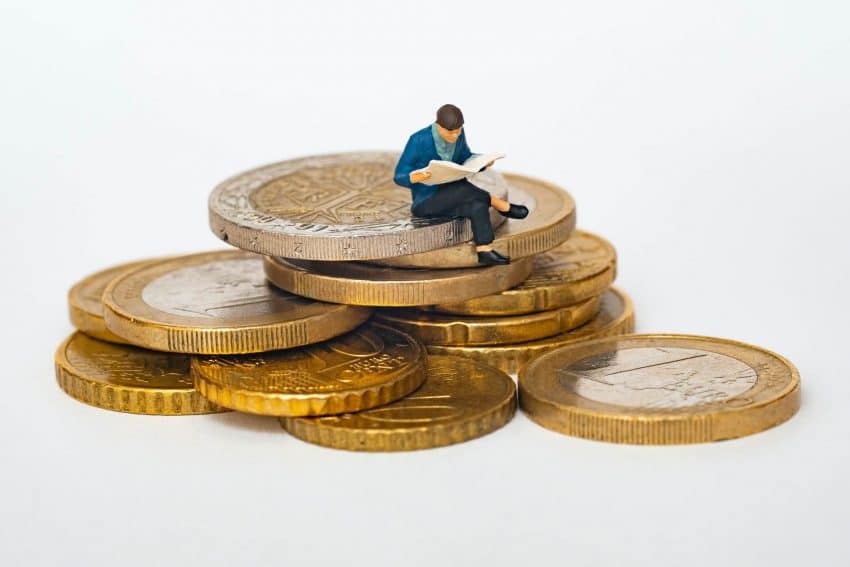10 Economic Principles To Follow
Updated: February 9, 2024
Published: March 16, 2021

Whether or not you notice it, economics plays a significant role in our day-to-day lives. From what we buy to how we budget, economics is a major factor in a lot of our regular activities. Still, there exists a collection of economic principles that dictate how the economy functions and what rules should be set.
If you’re interested in pursuing a career in the field of economics, it’s a good idea to get acquainted with these rules so that you have a good understanding of these basic economic principles throughout your studies.
Here, we’ll go over the 10 main economic principles to follow and outline each one to understand how they’re applied.

Photo by Mathieu Stern on Unsplash
The 10 Economic Principles
There are 10 basic economic principles that make up economic theory and act as a guide for economists. Aside from standard economic concepts like supply and demand, scarcity, cost and benefits, and incentives, there are an additional 10 principles to follow in the field.
Let’s take a look at them more closely as well as some examples to illustrate each principle.
1. People face trade-offs
Everyone faces decisions that put one option above the other. Most decisions, especially economic ones, involve trading off one thing for another.
In society, one of the main trade-offs we experience is between efficiency and equity. Efficiency refers to something we can get the most out of, especially if the resource is scarce. Equity implies that all members of society benefit equally from a resource. The theory is that people will make good decisions if they thoroughly understand both options.
However, what usually ends up happening in life and in economics is that one item, either efficiency or equity, is chosen above the other. For example, the way students decide to spend their time or how governments allocate budgets can be examples of the trade-offs people face.
2. The cost of something is what you give up to get it
Since people face these trade-offs, a decision requires a comparison of the costs against the benefits of alternative courses of action. Sometimes, the most obvious action or answer isn’t the first one you would think of.
Each item has an opportunity cost, in other words, what you’re giving up to get it. So, when facing a decision, people should understand the opportunity cost involved in that decision and in each action.
For example, some people consider only the cost of an action, but not the time involved. Cooking dinner at home is cheaper than ordering from a restaurant, but takes up a lot more time than calling to place an order.
3. Rational people think at the margin
In general, economists like to assume that people are rational thinkers. Still, they look at marginal changes to describe small adjustments to the plan of action. Another way of looking at this is that people make decisions when they think at the margin, or around the edge of a plan of action.
For example, the decision of whether or not to take an extra class in your semester is an incremental decision that will have you comparing marginal costs and benefits.
When considering marginal changes, we as consumers are looking for the maximum satisfaction on our purchases that fit with our budgets and incomes. So, we look for ways to achieve maximum satisfaction within the constraints of what we are willing to pay for a commodity, and the decisions it takes to get there are influenced by marginal changes and rational thinking.
4. People respond to incentives
This economic principle isn’t surprising but makes a lot of sense when we consider the last few principles. Since consumers make decisions by comparing benefits and cost, what happens when that scale changes? That’s where incentives play a part.
Incentives inspire consumers to act by offering up an extra reward to those people who will change their behavior. Incentives can also be positive or negative, meaning you can incentivize people to do something or not to do something.
For example, a positive incentive would be offering employees a bonus if they work extra hours. However, a negative incentive can be exemplified by extra taxes governments might put on things like fuel that encourage people to use it less.
5. Trade can make everyone better off
This one seems obvious, but trade can be a positive for all parties involved. It’s not like a competition where one side wins and the other loses. In trade, all parties can win by focusing on what they’re best at.
The best example of this is countries that benefit from trading with each other. Most countries don’t have all the resources they need to function effectively, so they turn to other countries for more or even cheaper resources that they can trade. It also allows for a wider variety of goods to become available in the country, which increases competition on a global scale.
When you think about trade between countries, let’s say between the U.S. and Canada, neither side “wins,” but both benefit in different ways from a trade partnership.

Photo by Sharon McCutcheon on Unsplash
6. Markets are usually a good way to organize economic activity
A lot of countries used to have a centrally planned economy but are now moving towards market economies.
In a market economy, decisions are made collectively by millions of households and firms that have a stake in the economy. If you think about it, it’s like a cycle. Households decide where they’ll work, and firms decide who they want to hire and what to produce. These two parties interact in the market economy where decisions are guided by self-interest.
Sometimes, the market economy or aspects of it fail, and that’s where governments have to step in to implement policy. But usually, the interaction between households and firms are guided almost automatically, seemingly by an ‘invisible hand’ that helps direct economic activity.
The result is that households and firms consider prices when looking at what to buy and sell, and they both look at costs and social benefits, which ultimately ends in a society’s welfare being increased.
7. Government can sometimes improve market outcomes
We touched on the government interfering in the market in the last economic principle in the form of policy creation, but why does the government need to intervene when we have the invisible hand?
Well, the hand actually relies on the government for protection. The market will only work if certain rights are enforced, and the hand needs help in organizing economic activity within the market, namely, to promote both efficiency and equity.
Markets can fail when they fail to allocate resources efficiently, and this happens as a result of externality, which is when an action produces an impact on the well-being of a bystander, or in this case, of society. An example of this is pollution and the well-being of the environment. Without the intervention of governments, the market could have a negative impact without even meaning to.
Additionally, the invisible hand might not focus on how to distribute resources equitably and instead may reward individuals based on their production.
8. A country’s standard of living depends on country production
As we know, there are different standards of living in different countries, and this is directly correlated to the country’s productivity.
Not only that, but the changes over time of standards of living can also be quite significant. For example, even in high-income countries, the Western world has made leaps and bounds in what we consider to be the standard of living. When compared to lower-income countries, the growth of the standard of living is slower.
This growth can be traced back to the goods and services produced in each country. In places where workers are able to produce more goods, the standard of living is higher, and vice versa. To increase the living standard, there need to be public policies that affect it without negatively impacting productivity by way of increasing education and providing better access to tools and technology.
9. Prices rise when the government prints too much money
This one is relatively simple. Prices follow inflation, and a high rate of inflation increases costs, so economic policymakers aim for a lower level of inflation to keep the market moving. In most cases of a high rate of inflation, the cause is that there’s too much money in circulation. When governments print more money and there’s more available, its value decreases.
10. Society faces a short-run trade-off between inflation and unemployment
Another result that occurs when there’s more money circulating is a lower rate of employment. Economists use the Phillips Curve to trace the correlation between the two, which helps them understand market and business cycles. The Phillips Curve aims to push inflation and unemployment in opposite directions.
Policymakers can impact inflation and unemployment by altering how much money is printed, as well as the amount of government taxes. Therefore, the policies that are implemented by governments and policymakers have a direct impact on the market and economy and can severely impact the rates of inflation and unemployment.
Final Word
If you’re interested in these economic principles and want to know more about how they function in society and generally how the economy works, then consider studying economics in college.
While economics is not currently one of our offered programs, we do offer degree programs in other fields. At University of the People, all of our courses are held entirely online, so you can learn remotely from wherever you are, and are also entirely tuition-free.


